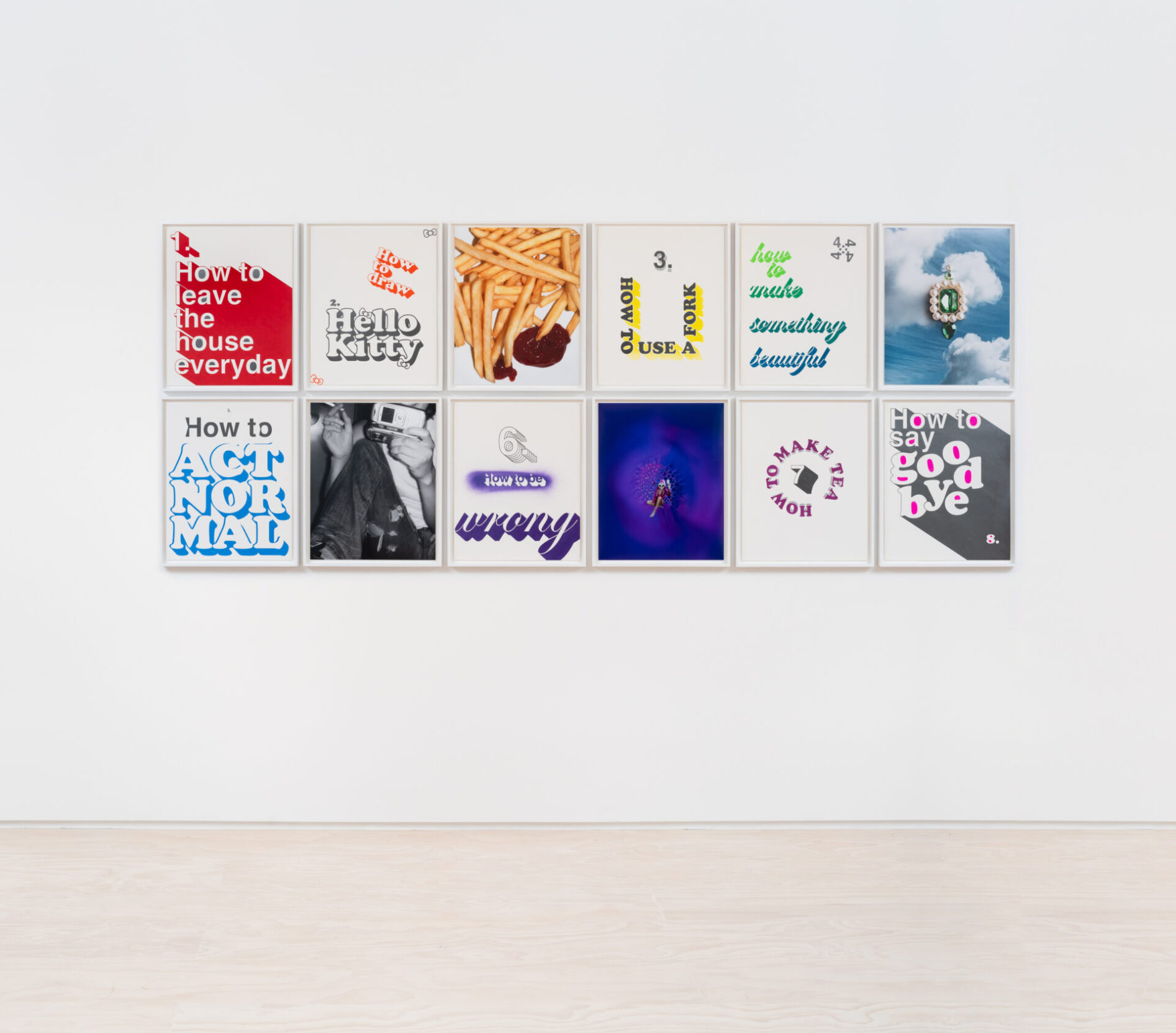The images are created from many processes — drawing of course, spray paint and other mark making that is then scanned and printed, objects that are constructed and photographed and then collaged and scanned and printed again, sometimes rhinestones are applied etc. Because there is so much variation in the images (look and process) the framing again plays an important role in unifying all the disparate forms together, in the same way that when I’m making books/zines I find that the rigidity of the structure/format (paper size and binding) helps contain and unite seemingly dissimilar imagery. Frame = structure, to create unity within the diversity.
Also related to bookmaking is the linear or sequential reading from one frame to the next, but there are also other paths available such as diagonal, or taking in the whole composition at once.
While the aesthetic is characteristically minimal, this way of working is also about “more,” a kind of maximalism. It’s about using everything and anything to try to get closer to a texture, an experience, a condition of being. “Everything, All the time, Always” was the name of my thesis show in grad school and is the way my brain works. There is so much order and restraint in my work, but in the sheer amount of information that I’m now working with there is also a chaos, a hyperactive layering, sampling, an exponential “one more thing!” One gets the sense this grid could go on forever, each piece is a piece of many pieces but the pieces might also just be pieces of another piece. The Polyptych structure affords so many opportunities for formal maneuvers. The individual compositions become game-pieces for the larger compositional and color plays. The system creates room for abstraction and pattern — things that would not necessarily stand on their own as works but here are imbued with associative meaning.— Sadie Barnette, April 2025

